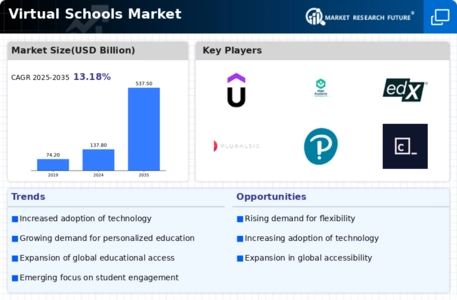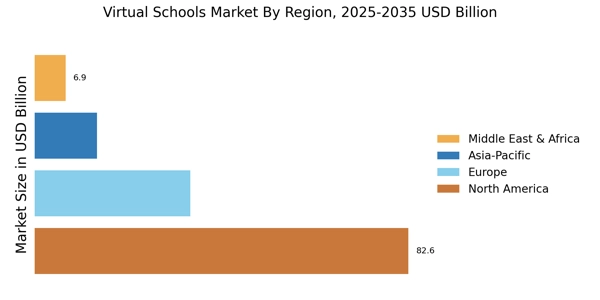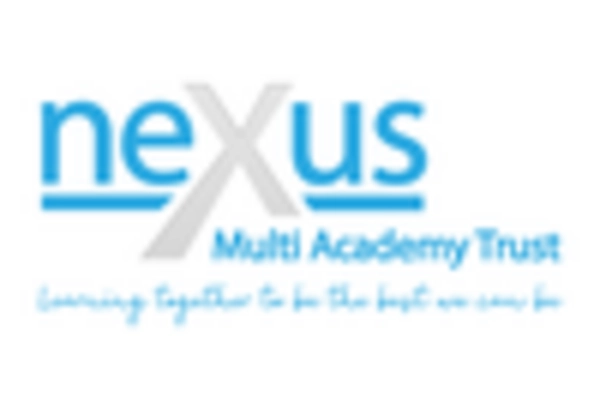Diverse Learning Models
The emergence of diverse learning models is reshaping the Virtual Schools Market. Various pedagogical approaches, such as blended learning, competency-based education, and project-based learning, cater to different learning styles and preferences. This diversity allows educational institutions to attract a broader range of students, each with unique needs and aspirations. Data suggests that institutions adopting varied learning models report higher student engagement and satisfaction rates. As educational stakeholders recognize the importance of catering to diverse learning preferences, the Virtual Schools Market is expected to expand, fostering an environment where all students can thrive.
Technological Advancements
The rapid evolution of technology plays a pivotal role in shaping the Virtual Schools Market. Innovations such as artificial intelligence, machine learning, and advanced learning management systems enhance the educational experience. These technologies facilitate personalized learning, allowing educators to tailor content to individual student needs. Furthermore, the integration of virtual reality and augmented reality into curricula offers immersive learning experiences that were previously unattainable. According to recent data, the market for educational technology is projected to reach substantial figures, indicating a growing investment in digital learning tools. This trend suggests that as technology continues to advance, the Virtual Schools Market will likely expand, attracting more students and educators seeking innovative educational solutions.
Global Reach and Accessibility
The Virtual Schools Market benefits from its inherent ability to transcend geographical barriers. With the internet as a conduit, students from various regions can access quality education regardless of their location. This accessibility is particularly crucial for underserved communities, where traditional educational resources may be limited. Recent reports indicate that the number of students enrolling in virtual schools has surged, reflecting a growing recognition of the importance of accessible education. As more individuals gain access to online learning platforms, the Virtual Schools Market is poised for continued growth, promoting educational equity across diverse populations.
Increased Demand for Flexible Learning
The demand for flexible learning options is a significant driver in the Virtual Schools Market. As educational needs evolve, students and parents increasingly seek alternatives to traditional schooling. Virtual schools offer the flexibility to learn at one's own pace and schedule, accommodating diverse lifestyles and commitments. This flexibility is particularly appealing to non-traditional students, including working professionals and those with family responsibilities. Recent statistics indicate that a considerable percentage of students prefer online learning due to its convenience. Consequently, the Virtual Schools Market is likely to experience growth as more individuals recognize the benefits of flexible educational pathways.
Government Support and Policy Initiatives
Government support and policy initiatives significantly influence the Virtual Schools Market. Many governments are increasingly recognizing the value of online education and are implementing policies to promote its growth. This includes funding for virtual school programs, incentives for educational technology adoption, and regulatory frameworks that support online learning. Recent data indicates that countries investing in digital education infrastructure are witnessing a rise in student enrollment in virtual schools. As governments continue to prioritize education reform and innovation, the Virtual Schools Market is likely to benefit from enhanced support, leading to further expansion and development.


















Leave a Comment